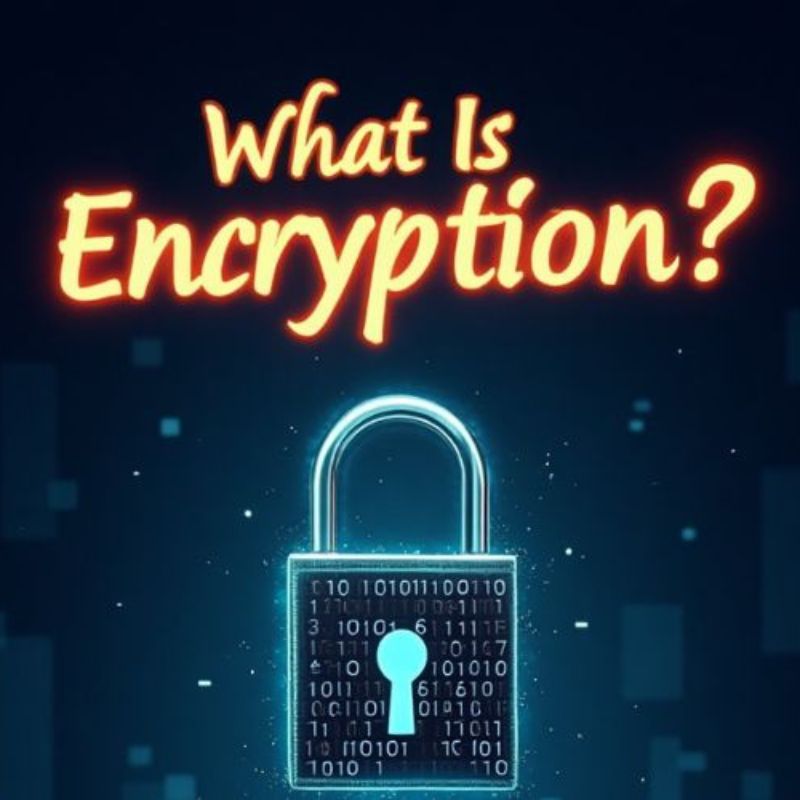In the digital age, where privacy and cybersecurity are more important than ever, understanding the cryptography and encryption difference can help individuals and businesses protect their data effectively. While these two terms are often used interchangeably, they are not the same. Each plays a distinct yet interconnected role in securing communication, information, and systems.
Let’s break down these two pillars of cybersecurity in simple terms, explore how they differ, and examine their applications in the real world.
What Is Cryptography?
Cryptography is the broader science and art of securing information by transforming it into a format that is unreadable to unauthorized users. It encompasses all techniques for secure communication, including algorithms, keys, protocols, and more.
It includes the development of methods to:
- Conceal messages (confidentiality)
- Ensure the authenticity of data (integrity)
- Confirm the identity of users (authentication)
- Prevent denial of transactions (non-repudiation)
Cryptography can include both encryption and other security techniques such as digital signatures, hashing, and secure protocols.
What Is Encryption?

Encryption, on the other hand, is a subset of cryptography. It refers specifically to the process of converting plaintext into ciphertext using a key, ensuring that only those with the correct key can read the information.
There are two main types of encryption:
- Symmetric encryption: The same key is used for both encryption and decryption.
- Asymmetric encryption: Uses a public key to encrypt and a private key to decrypt.
Encryption helps ensure data confidentiality, especially during data transmission or storage.
Cryptography and Encryption Difference in Simple Terms
To clearly understand the cryptography and encryption difference, think of it this way:
- Cryptography is the full security toolbox. It includes encryption, decryption, hashing, authentication protocols, digital signatures, and more.
- Encryption is one tool inside that toolbox. It’s the specific act of hiding information through code so only intended recipients can read it.
| Aspect | Cryptography | Encryption |
| Scope | Broad (includes many techniques) | Narrow (specific to data scrambling) |
| Purpose | Secure communication and data integrity | Hide data from unauthorized access |
| Includes | Encryption, hashing, digital signatures | Uses algorithms and keys to encode data |
| Tools & Techniques | RSA, AES, SHA, digital certificates, etc. | AES, DES, RSA (for encryption tasks) |
| Application Areas | Blockchain, SSL/TLS, secure messaging | VPNs, HTTPS, email security |
Understanding this cryptography and encryption difference is essential for anyone working in cybersecurity, IT, or handling sensitive data.
Why the Difference Matters in Practice
Many security breaches happen because people misunderstand the layers of protection required. Simply encrypting data isn’t always enough—true security comes from applying cryptography comprehensively.
For example:
- Encryption may protect a file on your drive.
- Cryptography ensures that file is tamper-proof, traceable, and authenticated during access or transmission.
When building secure systems, developers need to understand which cryptographic tools are necessary and how to implement them correctly—not just rely on basic encryption.
Real-World Applications of Cryptography and Encryption
Both cryptography and encryption are vital in many areas of modern life:
- Online Banking: Encrypts sensitive user credentials and transactions.
- E-commerce: Uses cryptographic protocols like SSL/TLS to secure payment gateways.
- Blockchain: Applies cryptographic hashing for transaction integrity and identity protection.
- Email Security: Encrypts messages while also verifying sender identity using cryptographic signatures.
These use cases show how the cryptography and encryption difference plays out in actual systems—each working in tandem to create robust digital security.
FAQs
Q: Are cryptography and encryption the same thing?
A: No. Cryptography is the broader field that includes multiple techniques for data protection, while encryption is one specific method used to secure information.
Q: Can encryption work without cryptography?
A: Technically, no. Encryption is a part of cryptography—it’s one application of cryptographic principles.
Q: Which is more secure—encryption or cryptography?
A: It’s not a matter of one being more secure. Encryption provides confidentiality, while cryptography ensures overall data security, including authentication, integrity, and more.
Q: Why is it important to know the cryptography and encryption difference?
A: Knowing the difference helps developers, IT professionals, and security analysts implement the right tools to protect digital data comprehensively.
Q: Is hashing a form of encryption?
A: No. Hashing is another cryptographic technique, but unlike encryption, it’s irreversible and used primarily for data integrity verification.
Conclusion
Understanding the cryptography and encryption difference is fundamental to anyone navigating the digital world—whether you’re a developer, business owner, or simply someone concerned about personal data privacy. While encryption focuses on making information unreadable to outsiders, cryptography provides a larger framework to ensure that data remains authentic, untampered, and accessible only by the intended parties.
When implemented properly, cryptography and encryption together provide a multi-layered security shield against cyber threats in everything from personal emails to enterprise systems.
Want to explore more practical cybersecurity insights, digital protection tips, and expert-written guides? Visit MindScribes—your trusted destination for thoughtful, actionable content in tech, wellness, and modern living.

